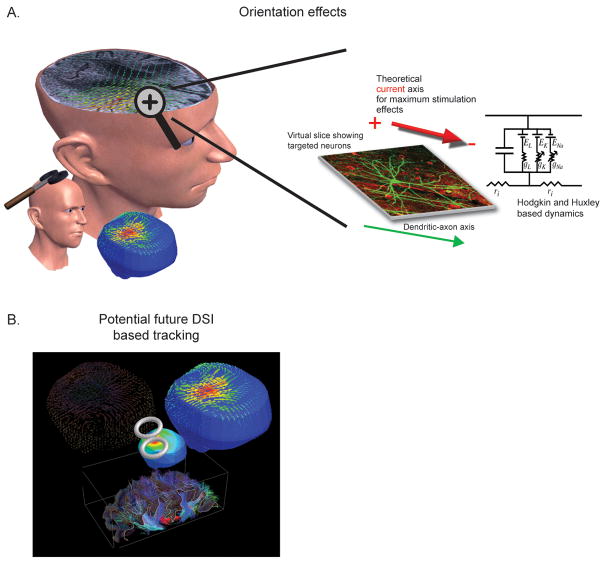Figure 5. Orientation specificity.
A. Ideal stimulating current-to-neural axis orientation. An ideal axis will exist for each individual neural architecture, dependent on the individual cellular geometries (where herein the inhibitory/facilitory axis is idealized for graphical representation). B. DSI solution. Future devices could be possible where neural architecture information would be provided from DSI and integrated with a field-solver/neurotracking-system to provide stimulation guidance (part B adapted from (Wagner et al. 2006)). DSI information could be used as one of the building blocks of an electromagnetic model (providing information such as the relative neural architecture and anistropic tissue information) and integrated with both the subject anatomical data and measured electromagnetic tissue properties to more accurately solve for the TMS induced current densities. In turn, these current densities could then be projected back onto the initial DSI scans to serve as a neural architecture based predictor of stimulation.

